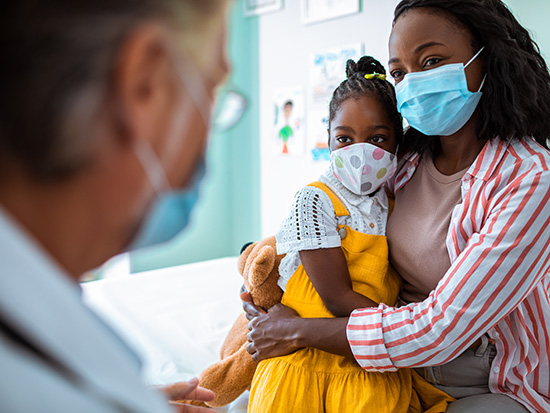Media contact: Adam Pope
 Two National Institutes of Health-funded University of Alabama at Birmingham initiatives, powered by the UAB Minority Health and Health Disparities Research Center, have joined forces to better understand and reduce testing and vaccination disparities for those disproportionately impacted by COVID-19.
Two National Institutes of Health-funded University of Alabama at Birmingham initiatives, powered by the UAB Minority Health and Health Disparities Research Center, have joined forces to better understand and reduce testing and vaccination disparities for those disproportionately impacted by COVID-19.
At the start of the pandemic, MHRC director Mona Fouad, M.D., received funding from the NIH Rapid Acceleration of Diagnostics-Underserved Populations, or RADx-UP, program to launch a community-based testing model in Jefferson County. The purpose of the study was to test whether a three-pronged approach, consisting of 1) robust pre-testing community engagement and communication to improve reach and acceptability, 2) targeted mobile testing in underserved neighborhoods to increase access to testing, and 3) culturally appropriate post-testing navigation/assistance and follow-up services could improve uptake of COVID-19 testing and help ensure better impact and health outcomes.
The MHRC was joined in this effort by 15 community partners, including churches, city government and public housing sites. In all, there were 46 successful RADx-UP testing events with more than 1,000 people tested for COVID-19. While the RADx project proved successful, the rapidly changing landscape of COVID-19 meant that community expectations were sometimes out of sync with what was being offered through research and community engagement projects.
As vaccinations became widely available, community priorities shifted from getting tested to getting vaccinated, resulting in a steep decline in testing demand and steep rise in vaccination demand, a rise that was sometimes difficult to meet. However, with the emergence of a new variant, Delta, the landscape changed yet again. Testing numbers rocketed past demand for vaccinations.
Through this cyclical experience, the MHRC learned that, to fight COVID, there was a need for balance between both testing and vaccination units. To make this happen, a partnership was needed, and the MHRC already had a perfect partner project.
In August 2020, the NIH provided funding to establish the Alabama Community Engagement Alliance Against COVID-19 Disparities, or Alabama CEAL, a project designed to conduct research to better understand community perceptions and concerns about COVID-19 and then put that research into action in community-based public health projects to reduce barriers to vaccination, testing and clinical trial participation. Also led by Fouad, Alabama CEAL was able to provide the vaccination effort alongside the RADx testing effort.
With each team’s focus on a different aspect of mitigating COVID, this allowed the strong community and provider network established for delivering trusted testing through RADx-UP to now be used to deliver the COVID-19 vaccines through the public health component of Alabama CEAL.
Currently, RADx-UP continues to use the testing model that was proved at the beginning of COVID. Health navigators remain in contact with those who test positive, following up weekly while symptoms remain.
Upon recovery, navigators continue gathering information from participants on the impact of COVID, long-term symptoms, barriers to basic health needs and the impact on their mental health. Navigators continue to provide assessments at six, 12 and 18 months.
Similarly, CEAL has assumed the role of promoting vaccine awareness using an active and compassionate approach. By sharing firsthand stories and trusted information with the community, CEAL aims to reach individuals undecided about the vaccine, throughout the state.
“The community partnerships developed through RADx-UP were incredibly valuable as we launched CEAL education and vaccine delivery,” said Melissa Ryan, program manager for the UAB Minority Health and Health Disparities Research Center. “Our partners helped provide successful COVID testing at their sites, and they were eager to provide the vaccine.”
Ryan, as well as Reashanda White, program manager at UAB, says she attributes the success of both RADx-UP and CEAL to the trusted community partners. White says that, by partnering with established faith-based organizations that have historically provided service to the residents, they are able to connect on a deeper level with the community.
“People turn to their pastors, and they trust them. So, having a pastor who is willing to lend us their church and say to their congregation, ‘This is a good source of information. This is a great place to get tested and vaccinated. You will not be taken advantage of. They’re here to help,’ has been really beneficial. They have these preexisting community engagement strategies, too. They’ve allowed us access to places that we wouldn’t normally have access to,” Ryan said.
The partnership between RADx-UP and CEAL is just one example of how the MHRC leverages its recourses to advance the programs under its umbrella. While individually these initiatives are “powered by the MHRC,” together they empower underserved communities across the entire state.
To learn more about the vaccine resources available, visit a CEAL clinic or download one of the many online assets.